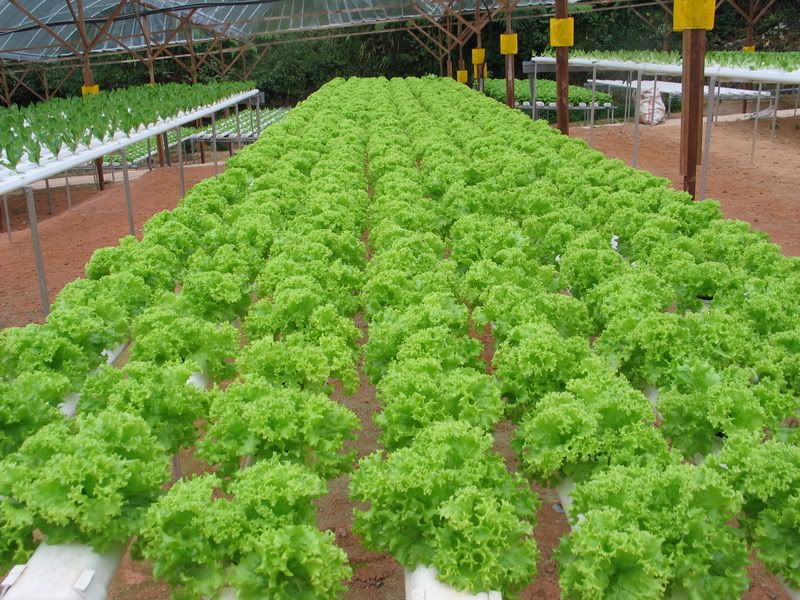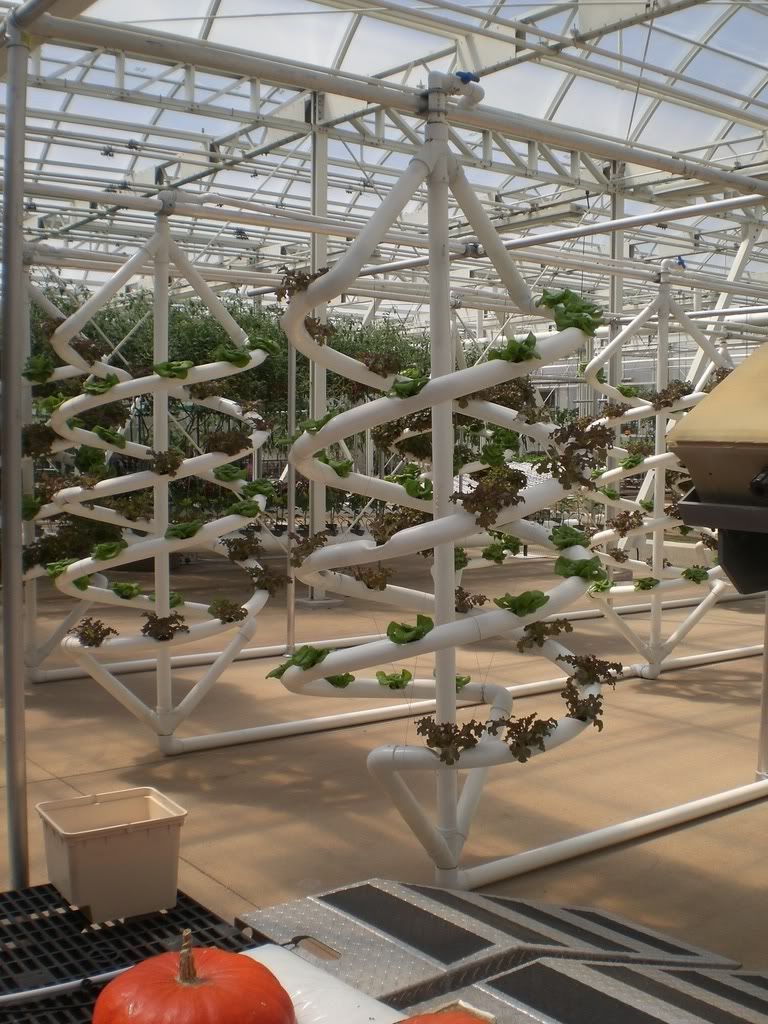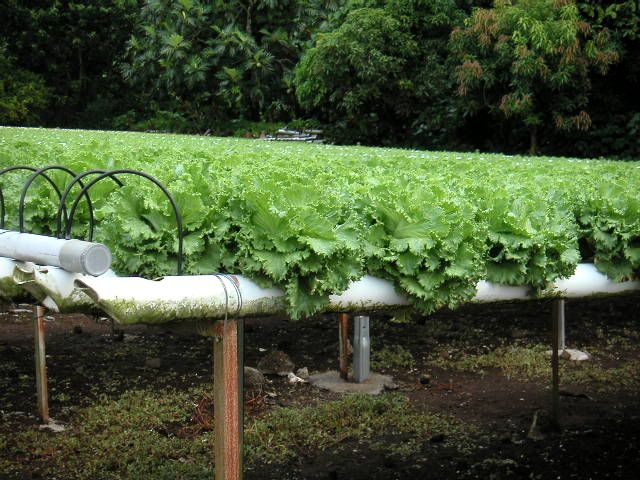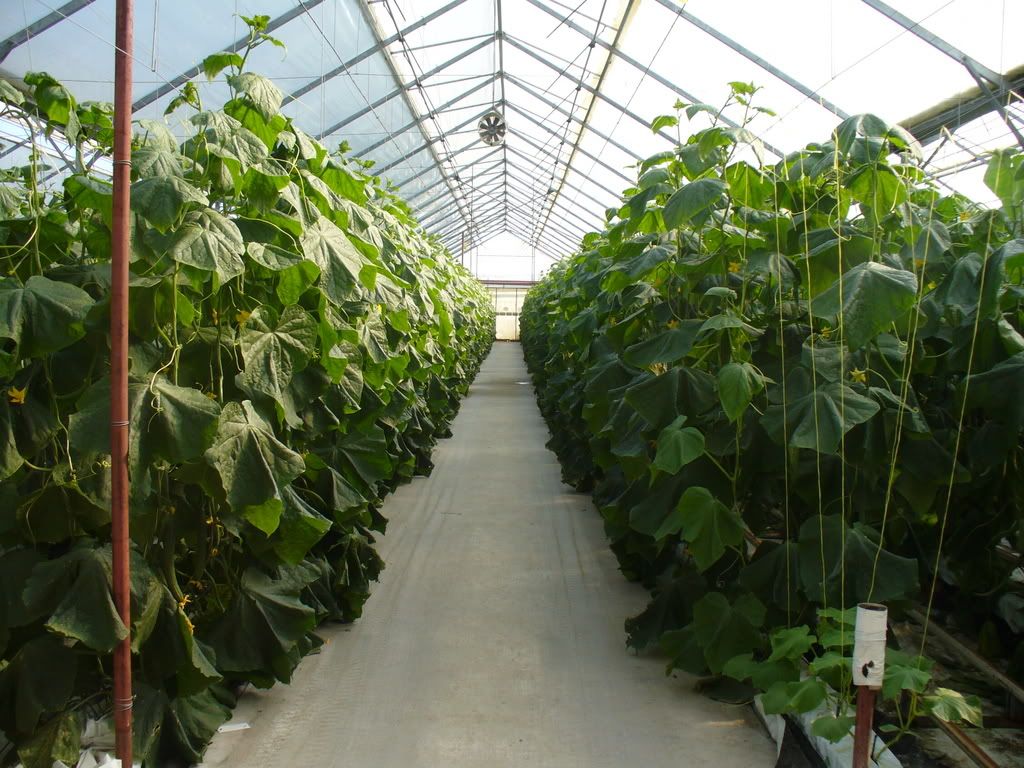I got one comment from a vis itor of this blog asking
itor of this blog asking me this question. What I can say is that normally, we get or buy all the compound of nutrient element needed as explained in a post Basic Need For Fertigation 4 - Fertilizer, get the ratio, weight them and mix them together before we dilute them in a pre-determined TDS and pH count water as a nutrient stock. The mixture must be devided into two components - component A and component B. The dilution
me this question. What I can say is that normally, we get or buy all the compound of nutrient element needed as explained in a post Basic Need For Fertigation 4 - Fertilizer, get the ratio, weight them and mix them together before we dilute them in a pre-determined TDS and pH count water as a nutrient stock. The mixture must be devided into two components - component A and component B. The dilution  must also be made saperately. So, you need to have two containers for two components of the fertilizer solutions. The reason is that some nutrient element cannot be mixed in a high concentration form. If you mix it altogether in one container, it will crystalise. In the begining, you need some capital in order to buy the whole thing. But it is more cost effective than buying the mixture from the third party. As for us, we have to admit that we also bought already prepared fertigation fertilizer mixture from a supplier because of a capital constraint. In Malaysia, we bought it from Department Of Agriculture Institute at Ayer Hitam, Johor and also MARDI (Malaysian Agriculture
must also be made saperately. So, you need to have two containers for two components of the fertilizer solutions. The reason is that some nutrient element cannot be mixed in a high concentration form. If you mix it altogether in one container, it will crystalise. In the begining, you need some capital in order to buy the whole thing. But it is more cost effective than buying the mixture from the third party. As for us, we have to admit that we also bought already prepared fertigation fertilizer mixture from a supplier because of a capital constraint. In Malaysia, we bought it from Department Of Agriculture Institute at Ayer Hitam, Johor and also MARDI (Malaysian Agriculture , Research and Development Institute) at Serdang, Selangor.
, Research and Development Institute) at Serdang, Selangor.  Different supplier have different mixture formula. It also depending on what plant you want to grow. The table below shows the formula ratio for Fertigation
Different supplier have different mixture formula. It also depending on what plant you want to grow. The table below shows the formula ratio for Fertigation
 itor of this blog asking
itor of this blog asking me this question. What I can say is that normally, we get or buy all the compound of nutrient element needed as explained in a post Basic Need For Fertigation 4 - Fertilizer, get the ratio, weight them and mix them together before we dilute them in a pre-determined TDS and pH count water as a nutrient stock. The mixture must be devided into two components - component A and component B. The dilution
me this question. What I can say is that normally, we get or buy all the compound of nutrient element needed as explained in a post Basic Need For Fertigation 4 - Fertilizer, get the ratio, weight them and mix them together before we dilute them in a pre-determined TDS and pH count water as a nutrient stock. The mixture must be devided into two components - component A and component B. The dilution  must also be made saperately. So, you need to have two containers for two components of the fertilizer solutions. The reason is that some nutrient element cannot be mixed in a high concentration form. If you mix it altogether in one container, it will crystalise. In the begining, you need some capital in order to buy the whole thing. But it is more cost effective than buying the mixture from the third party. As for us, we have to admit that we also bought already prepared fertigation fertilizer mixture from a supplier because of a capital constraint. In Malaysia, we bought it from Department Of Agriculture Institute at Ayer Hitam, Johor and also MARDI (Malaysian Agriculture
must also be made saperately. So, you need to have two containers for two components of the fertilizer solutions. The reason is that some nutrient element cannot be mixed in a high concentration form. If you mix it altogether in one container, it will crystalise. In the begining, you need some capital in order to buy the whole thing. But it is more cost effective than buying the mixture from the third party. As for us, we have to admit that we also bought already prepared fertigation fertilizer mixture from a supplier because of a capital constraint. In Malaysia, we bought it from Department Of Agriculture Institute at Ayer Hitam, Johor and also MARDI (Malaysian Agriculture , Research and Development Institute) at Serdang, Selangor.
, Research and Development Institute) at Serdang, Selangor.  Different supplier have different mixture formula. It also depending on what plant you want to grow. The table below shows the formula ratio for Fertigation
Different supplier have different mixture formula. It also depending on what plant you want to grow. The table below shows the formula ratio for Fertigation Cooper Formula :
Component A
- Calcium Nitrate (20.06kg)
- Fe-EDTE (1058g)
Component B
- Kalium Nitrate (11.6kg)
- Magnesium Sulphate (10.26kg)
- Mono kalium phosphate (5.26kg)
- Zinc Sulphate (8.8kg)
- Mn Sulphate (122g)
- Cu Sulphate (7.8g)
- Ammonium Molibdat (7.4g)
- Boric acid (34g)
MARDI (Malaysian Research & Development Institute) Formula:
Melon
Component A
- Calcium Nitrate (11.3kg)
- Fe-EDTA (164g) Magnesium Sulphate (5.64kg)
Component B
- Kalium Nitrate (10.1kg)
- Magnesium Sulphate (5.64kg)
- Mono Kalium Phosphate(1.75kg)
- Zn Sulphate (2.2g)
- Mn Sulphate (15.4g)
- Cu Sulphate (0.78g)
- Ammonium Molibdat (0.18g)
- Boric acid (30g)
Tomato
Component A
- Calcium Nitrate (9.36kg)
- Fe-EDTA (164g)
Component B
- Kalium Nitrate (8.12kg)
- Magnesium sulfat (2.630kg)
- Mono Kalium Phosphate(4.962kg)
- Zn Sulphate (2.2g)
- Mn Sulphate (15.4g)
- Cu Sulphate (0.78g)
- Ammonium Molibdat (0.18g)
- Boric Acid (30g)
There is a reason…
Usually, the calcium containing compounds are kept separate from the phosphate and sulfate compounds. Why? In high concentration the calcium will combine with the phosphates and sulfates to form insoluble precipitates.
THEREFORE:
A typical nutrient solution will be divided into 3 tanks:
Calcium/iron tank (iron gives it a reddish color)
Macro/Micro tank (all other macro and micro elements)
Acid tank (kept separate so pH can be adjusted individually)





























No comments:
Post a Comment